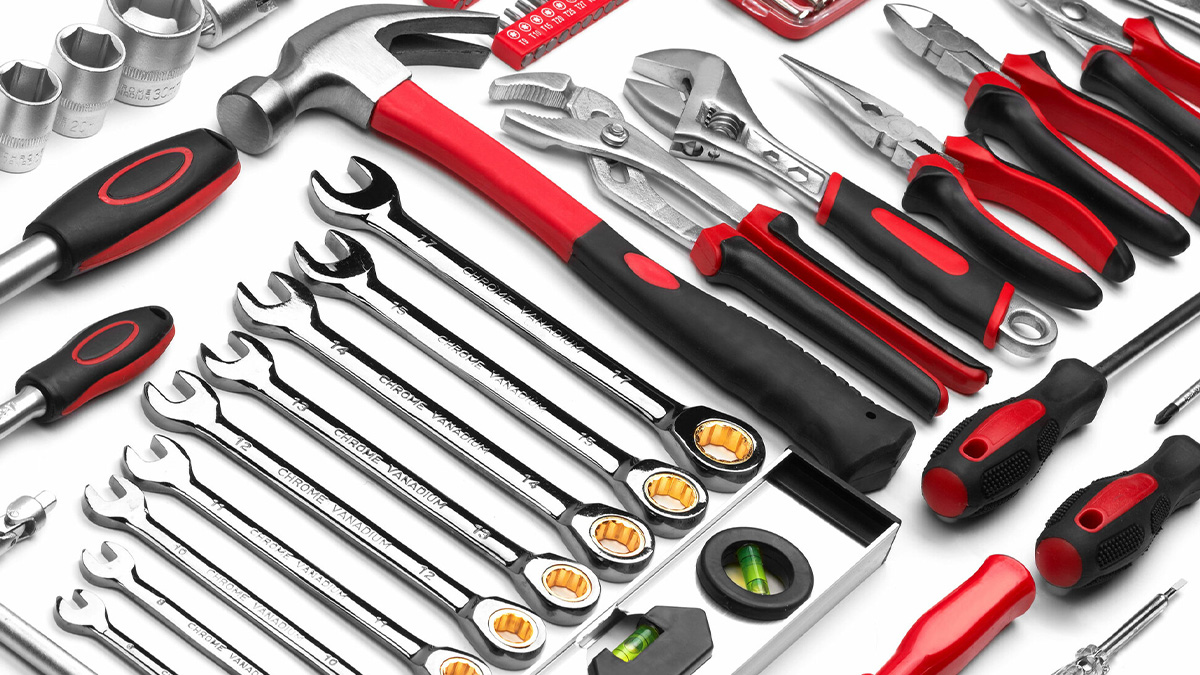The island's hand tool sector has a centralized industry hub located in central Taiwan, where big-name companies, along with small-and-medium enterprises and subcontractors across upstream and downstream supply chains, co-exist to fulfill the world's hand tool orders. International policies, along with manufacturing advantages, has helped the Taiwan hand tool industry reach sales of NTD$140 billion in 2021. The current trajectory indicates projected continued growth for at least another decade.
The COVID-19 pandemic's disruption on the economy has propelled lesser-known aspects of the global supply chain into mainstream awareness. One aspect has been the soaring demand for Taiwan’s semiconductor chips. While Taiwan is more widely known as the semiconductor hub of the world, equally crucial to keeping the world's economy running are hand tools. The island's hand tools sector is mainly located in central Taiwan, where a diverse network of manufacturers works together to supply hand tools to the world. A single hand tool could go through a dozen manufacturing processes, and be passed along through multiple companies in the area, before returning to the original contractor.
For Stand Tool, a local hand tool designer and manufacturer based in Taichung, Taiwan, representative Brand Hsiao says companies like them are at the forefront of the supply chain disarray, where smaller companies face the brunt of dealing with challenges on multiple fronts. Unlike more prominent companies with the capital to sustain operations through difficult times, SMEs have less of a fallback plan and are more likely to go under during crisis times.
Order volume has increased, yet with rising prices from shipping, delayed orders, raw materials, and such, Hsiao said these circumstances have made it difficult to do business. In addition, backed-up ports worldwide, especially in the U.S., a significant hand tools market for Taiwanese exports, had delayed delivery times in an unprecedented fashion. At the same time, the influx of orders had prompted Hsiao to question the circumstances amid the surge, saying the increase of orders did not reflect the usual peak season. Along with other industry experts cited by local media, he believes the order surge could likely result in a business lull after the influx of demand and further disrupt the usual business operations and predictability in the industry.
In terms of demographic issues, Taiwan's traditional industries face universal challenges similar to their counterparts in Western countries. However, while Western countries rely heavily on imports, manufacturing hubs in Taiwan are facing a shortage of workers, and could eventually lack essential workers to maintain operations. Traditional industries such as hand tools and hardware often have an older, aging workforce, so once they retire, businesses will be hard-pressed to find replacements or find and retain younger workers to pass on the know-how. As a result, companies either need to rely on migrant workers, which have become difficult to obtain due to stricter border restrictions during the pandemic, or bring automation to production and place a greater emphasis on talent retention.
On the other hand, traditional industries like the hand tools industry have seen their talent pool and resources gradually diminished by concentration on specific, popular sectors, where new hires are more likely to flock to. However, this also highlights the difficulties and challenges for the other "less popular industries," such as the hand tools industry, as industry know-how and talent retention are less accessible and achievable.
To bridge the gap, in recent years, Taiwan Hand Tool Manufacturers Association (THTMA) had local companies, benchmark companies, China Steel Corporation, and the government pool combine resources to bring innovation to manufacturing process and produce better quality products. With upstream companies such as China Steel providing quality raw materials, and sub-contractors providing more specialized treatments, such as forging, heat treatment, and electroplating, Taiwanese hand tool companies quickly rolled out medium to high-end OEM products of big-name brands in the U.S. and Europe.
Taiwan's hand tool products are less competitive against Chinese products in terms of prices, but with the global economy entering the third year of the pandemic, circumstances have shed an unflattering light on the pre-pandemic supply chain's just-in-time model. International policies, such as China's strict zero-COVID policies and power shortages in late 2021, have also caused further disruption of the supply chain. There is a need for greener energy and zero-carbon initiatives, which can become a deciding factor for companies deciding whether to do business in the country or not. All are factors and advantages that Taiwan's hand tool industry maintains. THMTA Chairman Huang Hsin-te was quoted by local media Global Views, that Taiwan's hand tools industry value would hit NTD$140 billion for 2021. The current trajectory would ensure continued growth for at least another decade.




.jpg)









